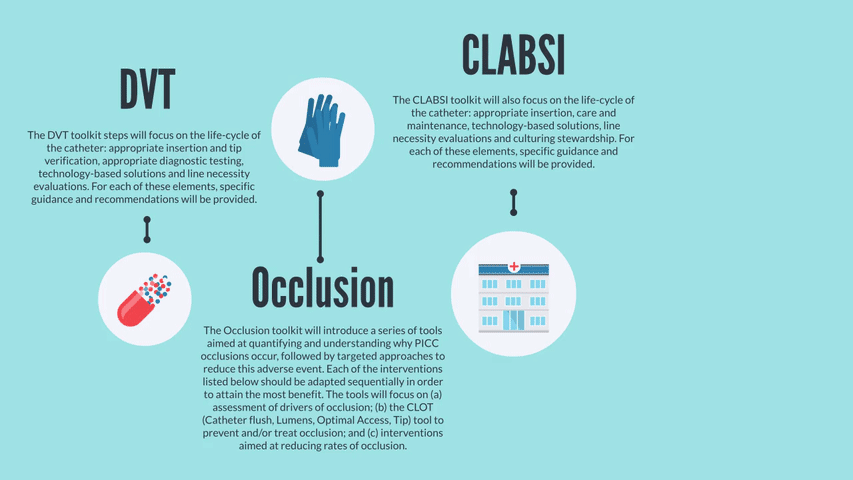In partnership with the Michigan Hospital Medicine Safety Consortium, we have developed online toolkits targeted towards managing and reducing PICC complications in three specific areas:
Within each complication area, there are a list of steps with associated details and resources, including peer reviewed articles, videos, fliers and handouts for staff, patient education resources, and audit forms. For each step within the toolkit, key institutional partners are identified. These are people you will want to engage in this work. We recommend progressing through the toolkits in a stepwise approach. Click on the buttons below to get started!
